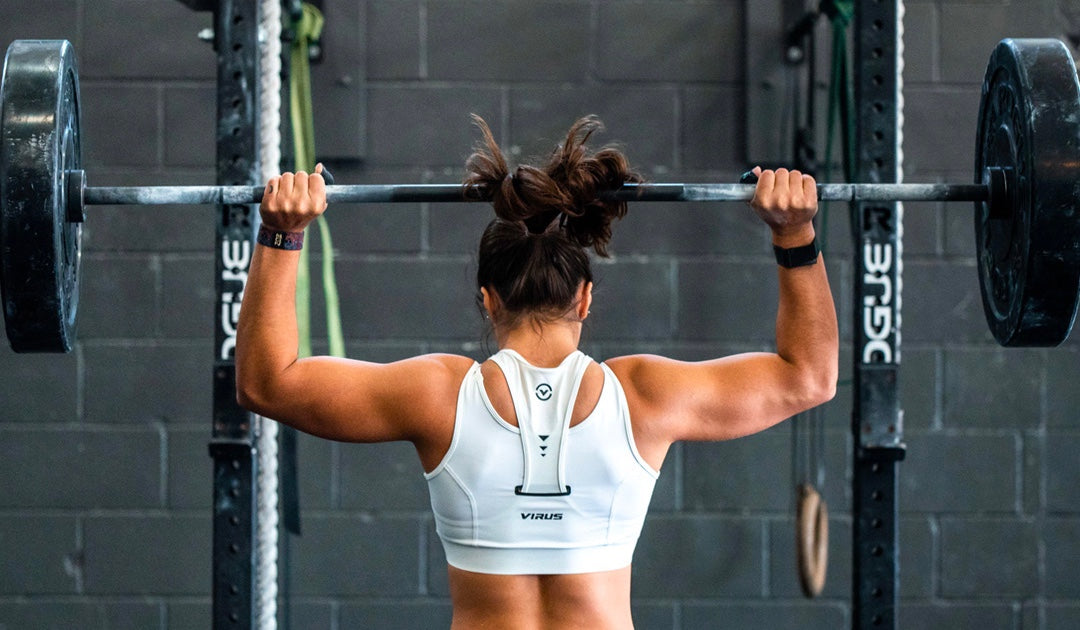
How to Improve Muscle Soreness After a Workout
Share
Muscle soreness after a workout can come in two different forms: acute muscle soreness and delayed onset muscle soreness (DOMS). Acute muscle soreness occurs immediately following your workout, while DOMS occurs anywhere from 24 to 72 hours following your workout.
You might be experiencing one or both of these symptoms depending on your body and type of workout performed.
While things like stretching and NSAIDs are common suggestions, they have actually been proven to be quite ineffective in reducing post-workout pain.
Here are 11 simple tips and tricks that you can easily incorporate in your workout routine.
Staying Hydrated and Using Proper Form
The most important thing you can do to reduce swelling and muscle soreness is to practice hydration and proper form. This means you should always allow for an adequate warm-up and cool down time when working out.
Practice dynamic stretching prior to your workout by doing walking lunges or arm circles. Static stretches may actually inhibit muscular performance, so you want to be sure that you’re repeatedly moving your muscles and joints prior to a workout.
Following the workout, cool down with an easy aerobic workout. This can include walking, a light jog, or using the elliptical machine. This helps breathing and heart rate return to normal, as well as removing any lactic acid that’s built up during the workout.
Moreover, it is vital that you learn the proper form for the various workouts you are performing. Bad form not only can lead to more muscle soreness, but it can often lead to even more injuries. Once the proper form is learned, stick to a routine that gradually increases in intensity and duration. A big leap in the intensity of your workout will almost always make your soreness and muscle pain worse.
Anti-Inflammatory Foods
Any foods that are rich in antioxidants will help reduce muscle strain and soreness. Studies have shown that foods that contain certain types of amino acids can help recovery heart rate and muscle soreness.
Some of these foods include:
- Watermelon
- Cherry Juice
- Pineapple
- Ginger
Anti-Oxidant Supplements
A supplement like curcumin (found in turmeric) that is high in antioxidants has powerful anti-inflammatory effects. Supplements like these have been shown to reduce the pain of DOMS and speed up the recovery process.
Other supplements that may help include fish oil, omega-3 fatty acids, vitamin A, vitamin C, and vitamin E.
Milk Protein
If you’re looking for an all-natural solution to your muscle soreness, milk protein supplementation has shown to help with muscle soreness and strength. Milk protein is a concentrated product that contains 40-90% milk protein.
You can find this in powder form in many health stores.
Heat Therapy
Applying heat directly after your workout can reduce DOMS greatly. Both dry and moist heat work, but moist heat has shown to be more effective.
Examples of ways to use moist heat include:
- Warm damp towels
- Wet heating packs
- Warm baths
Soaking in a hot Epsom salt bath has been shown to reduce muscle pain and inflammation.
Cold Therapy Following Heat
Using cold therapy after you have completed heat therapy reduces swelling and nerve activity in the applied area. Using an ice pack or bag of frozen vegetables can certainly suffice but soaking in a cold bath may be the most helpful form.
However, it’s important to note that you should never apply ice directly to the skin.
Foam Rolling
Foam rolling is an effective form of self-massage that helps alleviate acute muscle pain and DOMS. To do it, place the roller on the floor underneath the sore muscle and slowly roll your body over it.
Doing this helps release some of the tension and also helps muscle fatigue and flexibility.
Treat Yourself to a Massage
While foam rolling works effectively, there’s no substitute for the real thing. A professional massage helps alleviate DOMS and improves your muscle performance for your next workout.
The best time to schedule your massage is 48 hours after your workout. Studies have shown that is the most effective timing.
Drinking Coffee Before Workout
It should not replace hydrating before, during, and after the workout. However, studies have shown that pre-workout caffeine consumption can reduce muscle soreness and fatigue.
The reason this can be an effective pre-workout routine is that caffeine has analgesic properties and is actually an ingredient in many pain relief medications.
Wearing Compression Attires
Wearing compression garments such as sleeves, socks, and leggings for 24 hours after a workout has been shown to reduce DOMS and speed up the recovery process. These compression items help by holding muscles in place and increasing blood flow to the area.
Exercising More
While it has to be done cautiously, exercising more can actually go a long way in reducing post-workout symptoms. Muscle soreness is a natural process that helps the body get used to the exercise.
Once you induce this soreness, it won’t happen again until you increase the intensity of your workout. If your post-workout pain is severe, exercise at a lower intensity than normal or switch to a different muscle group.
Order Capsiva Today
While all of these tips can help reduce DOMS or acute muscle soreness, Capsiva is the perfect solution to get true relief. Capsiva provides natural pain relief by targeting inflammation and pain at the root of the problem.
Instead of distracting you from the pain, Capsiva works by blocking the pain signals, which promotes healthy blood flow and helps reduce inflammation.
Learn more about how Capsiva works and order yours today!
